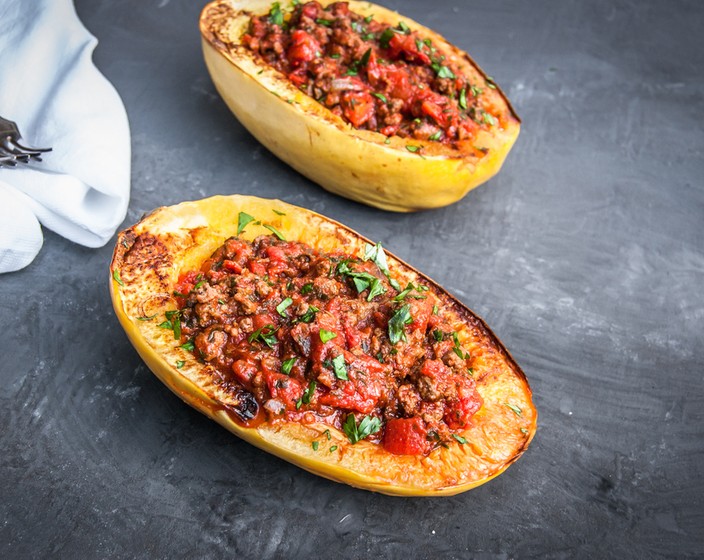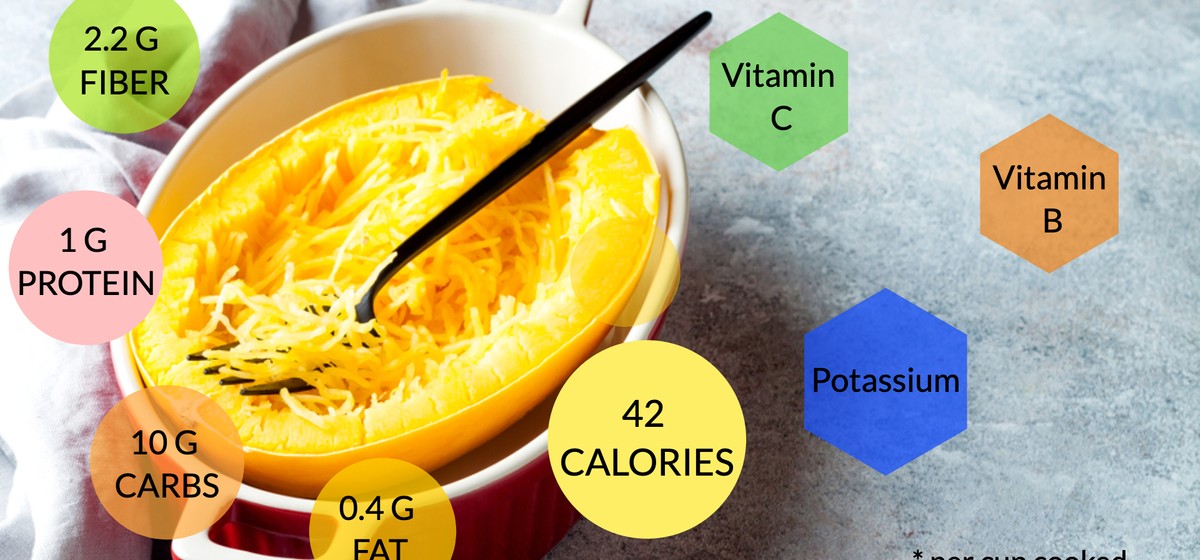Everything You Ever Wanted to Know About Spaghetti Squash




Can I have everyone's attention, please? I just want to remind you about the versatile and very underrated spaghetti squash.
This humble winter squash has never gotten the recognition it really deserves. We have embraced pumpkin and made it the queen of fall produce; butternut squash joins pumpkin and pretty much rules Thanksgiving, and the fancy-shaped acorn squash gets love for being "the pretty one".
The way we treat spaghetti squash is simply unfair. Not to mention all the common misconceptions about it. Let's quash those myths once and for all:
Spaghetti squash gets its name for a pretty obvious reason - when you cook this winter squash, the flesh naturally develops threads that resemble spaghetti. That's why it's all the rave in the low-carb and keto communities.
It is a fantastic pasta substitute! Let's be honest, though; you are not going to miraculously trick yourself into thinking that spaghetti squash is actually pasta. But it can replace pasta dishes in the sense that it gives you the tasty low-carbohydrate, low-calorie alternative for pasta noodles; and you can enjoy a huge bowl of this steamy yummy noodle-like squash totally guilt-free; its fiber content makes it very filling, and the texture supports any sauce or seasoning you usually enjoy on pasta. It even twirls around your fork the same exact way.
Spaghetti squash wins this title leaving all the other squash varieties far behind. And don't think that it's void of nutrients; it's rich in fiber, Vitamin A, beta carotene, Vitamin C, potassium, calcium, and magnesium, just to name a few. All that while only containing 42 calories per cup.

Opposite to common misconceptions about 'diet' foods, spaghetti squash is very flavorful. It has a beautiful mild nutty flavor and a nice smooth texture with a slight crunch.
Don't let the word 'winter' trick you into thinking that winter squash varieties are only available in winter. Spaghetti squash is generally available all year round, peaking in early fall and staying in season throughout the winter.
It's oval yellow squash with thick hard skin, very different from the bell-shaped butternut squash.
When shopping for spaghetti squash, look for a firm and smooth vegetable that doesn't have any spots or blemishes and is of nice golden yellow color. When you tap it slightly, you should hear a hollow sound. And it's best if the stem is still attached to it.
The skin of the squash should be very thick and hard. If you use your fingernail to poke it, you will know it's ripe if your nail can't penetrate the squash.
Local farmer's markets are the best option in fall and winter, where spaghetti squash will likely be available. And the reason we call these a winter variety is because they can be stored all through the winter for up to three months.
Raw whole spaghetti squash can last for up to three months in a cool and dark place. Once you cut it open, you should cook it within five days. Cooked spaghetti squash stays okay to eat for about four days.
You can even freeze cooked spaghetti squash and have it ready whenever you need it. Ensure that it's fully cooked and chilled before you freeze it and remove the excess liquid so it doesn't get too watery when reheated. It can stay in your freezer for up to 8 months.
Don't freeze uncooked squash. It will change its texture, not to mention it will take forever to defrost. It's available year-round, after all.
It can be a bit tricky to cut this squash as it is very hard and rolls easily. There are a few things you can do to make it easier.

Oven: baking or roasting
Cooking spaghetti squash in the oven is the most popular and easy way. If you like this idea, you can either cut the squash in half or cook it whole.
The traditional way is placing your halved squash on a baking sheet cut side down. But it can turn out a bit watery sometimes. Opposite to the popular cut side down method, season and drizzle your halved squash with oil and cook it in the oven cut side up. It's a game-changer!
Baking squash cut side up makes the spaghetti-like strands more defined, elevates the flavor, and you never get the undesirable watery consistency.
Tips:
It is my favorite way to cook it and a guaranteed way to get a delicious result. Take a look at these roasted spaghetti squash recipes for some inspiration:
Microwave: quick and easy
If you need a super quick method to cook spaghetti squash, then just microwave it. Microwaved squash has almost the same consistency as roasted one, and you can easily swap the oven-roasted one for its microwaved version.
How to prep the squash for the microwave:
If you are not pressed on time and can wait, just oven cook the squash. It always turns out more flavorful this way. Baking it also takes care of all the excess moisture; microwaving doesn't.
Slow Cooker/ Crockpot: easy, not quick
Cooking squash in a slow cooker or a crockpot is the most low-effort way, but it does take a while. About 4 hours, to be precise.
How to prep the squash for the slow cooker or crockpot:
Pressure Cooker/Instant Pot: 7-minute magic
In general, you should follow the recommendations given in the manual for your specific instant pot. But some pressure cooker spaghetti squash rules are universal
How to prep the squash for the pressure cooker or instant pot:
Tip:
Don't forget that it takes the pressure cooker a few minutes to build up the pressure. So the actual cooking time should start when the high pressure is reached, about 5-10 minutes in, depending on the model.
Choose the cooking method you like best and enjoy the low-cal high-satisfaction gem of this winter squash variety.
The delicious meals you can cook with this versatile vegetable are not limited to pasta. You can make casseroles, chilis, low-carb crusts for pizzas and pies, and even tacos! Check out some of our absolute favorite recipes with spaghetti squash, and get cooking!